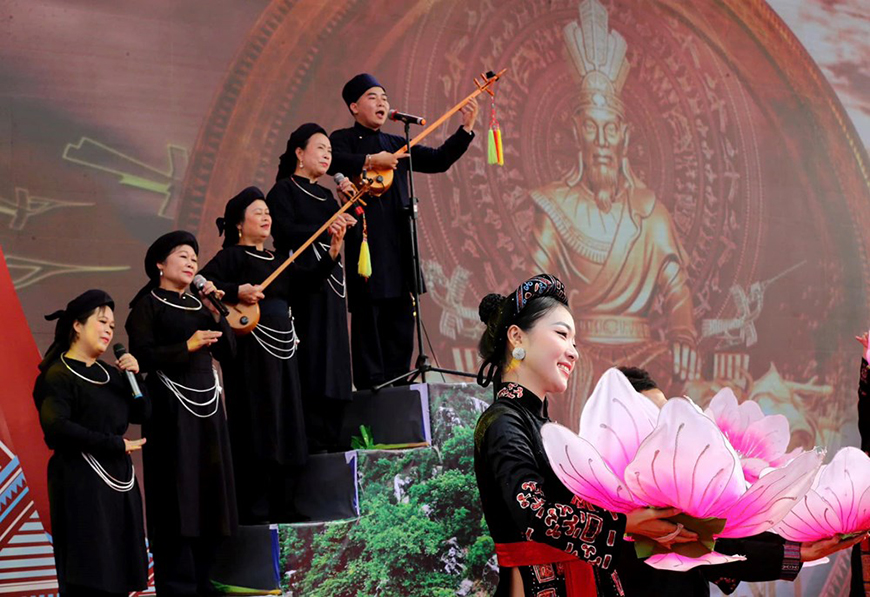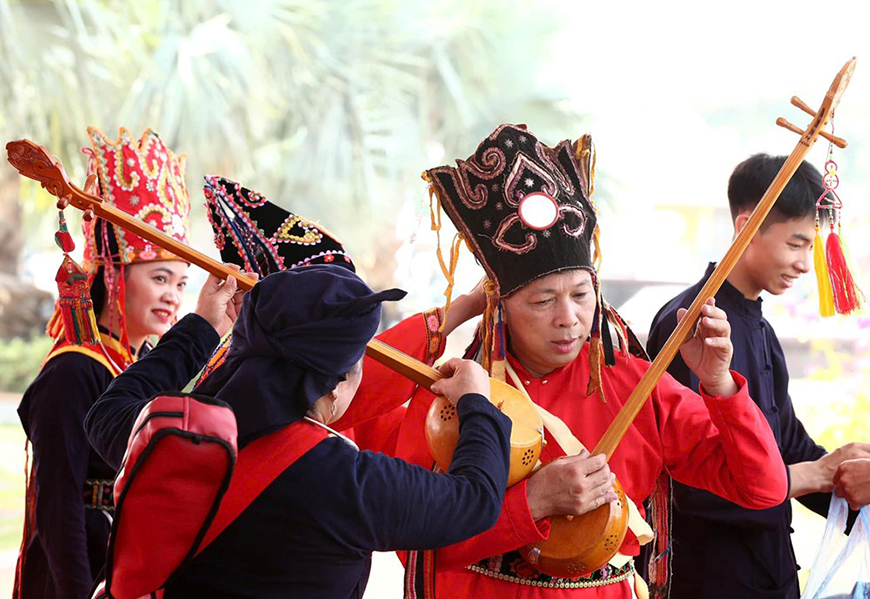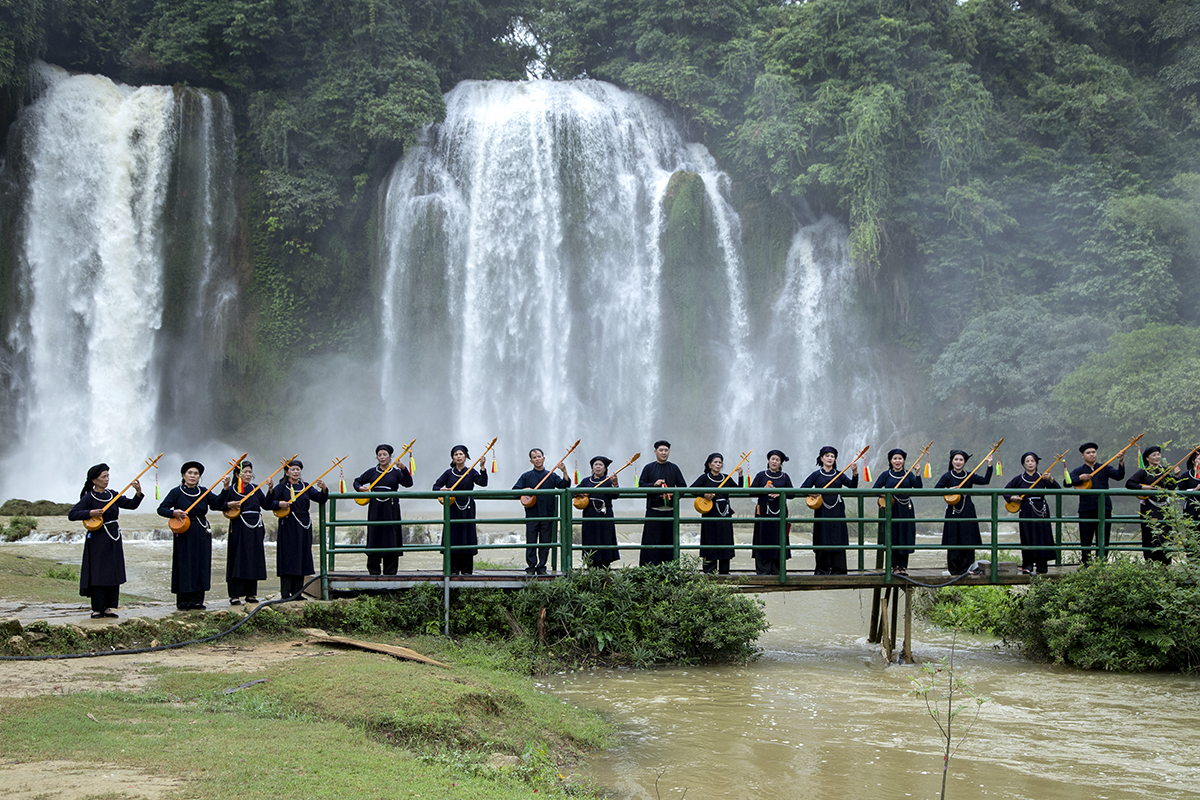Introduction
In the heart of the green landscapes of northern Vietnam, the Bac Kan province holds a rich and fascinating cultural heritage. Among its most precious treasures are Hat Then and Đan Tinh, artistic and spiritual expressions that deeply touch the souls of the Tay, Nung, and Thai communities. More than just folk traditions, Hat Then and Đan Tinh are at the core of the Tay people’s cultural identity in Bac Kan. The province is really dedicated to preserving and promoting this unique heritage, offering visitors a real glimpse into its spirit.

Hat Then: a spiritual and enchanting song
Hat Then is an age-old form of musical and ritual expression, alive in the Tay, Nung, and Thai communities, and especially present in Bac Kan. This singing is closely tied to the local spiritual and cultural life, playing a key role in important ceremonies like prayers for peace, good harvests, health, and happiness. The word “Then” translates to “God,” and Then songs are seen as magical melodies, calling upon spirits during meaningful ceremonies. During these rituals, the singer, often a shaman called “Thầy Then” (Then master), communicates with spirits to ask for protection and blessings. The singing is beautifully accompanied by the Đan Tinh, a traditional stringed instrument whose gentle melodies add an enchanting touch to the whole experience.
There are several regional variations of Then, each with its own special characteristics. In Bac Kan, Then often stands out for its storytelling and soft singing style, recounting old stories, legends, folktales, and also modern themes like daily life, love, nature, and even modern achievements. Recognized by UNESCO as an Intangible Cultural Heritage of Humanity since 2019, Hat Then is actively preserved and promoted in Bac Kan by dedicated clubs. These clubs organize cultural exchanges, classes for young people, and public performances, making sure this precious tradition is passed down to future generations. Throughout the province, and especially in the Cho Đon, Na Rì, Bach Thong districts and Bac Kan city, villages also take part in this effort to keep the tradition alive.
Today, Hat Then is evolving, sometimes including modern lyrics that reflect current social and political hopes, which helps it stay relevant and dynamic. It’s also performed on stage, at local festivals (like the spring festival in Ba Be) and tourist events, gaining more visibility through local media.

Đan Tinh: the musical soul of Hat Then
The Đan Tinh is inseparable from Hat Then, forming a harmonious duo that delights people. This unique folk instrument of the Tay people is known for its sweet and warm sound. Traditionally, it’s a zither with 2 or 3 strings, but some talented master craftsmen, like Nghệ Nhân Dương Văn Thục in Bắc Kạn, have created versions with up to 12 strings, enriching its sound range. The Đan Tinh is made from natural materials: a dried gourd shell or a wooden box is used for the soundbox, and a long mulberry wood neck completes the instrument. Cultural clubs, like the one in Nam Mẫu commune in the Ba Bể district, bring together enthusiasts of all ages to learn and practice Hat Then and Đan Tinh, ensuring the preservation and promotion of this precious heritage.
But to really experience Hat Then and Đan Tinh, the best thing to do is attend the Ba Be Spring Festival: Every year, on the 10th day of the lunar new year, the village of Bo Lu comes alive for the Lễ hội Lồng tồng Ba Bể, a major event where Hat Then and Đan Tinh take center stage, along with ceremonies, dances, and traditional games.
A unique cultural heritage
Hat Then and Đan Tinh go beyond just being folk art: they are the beating heart of Bắc Kạn’s culture, connecting generations and showing the spiritual richness of its people. A trip to Bắc Kạn is an invitation to discover these unique cultural treasures and immerse yourself in the spirit of authentic Vietnam.

